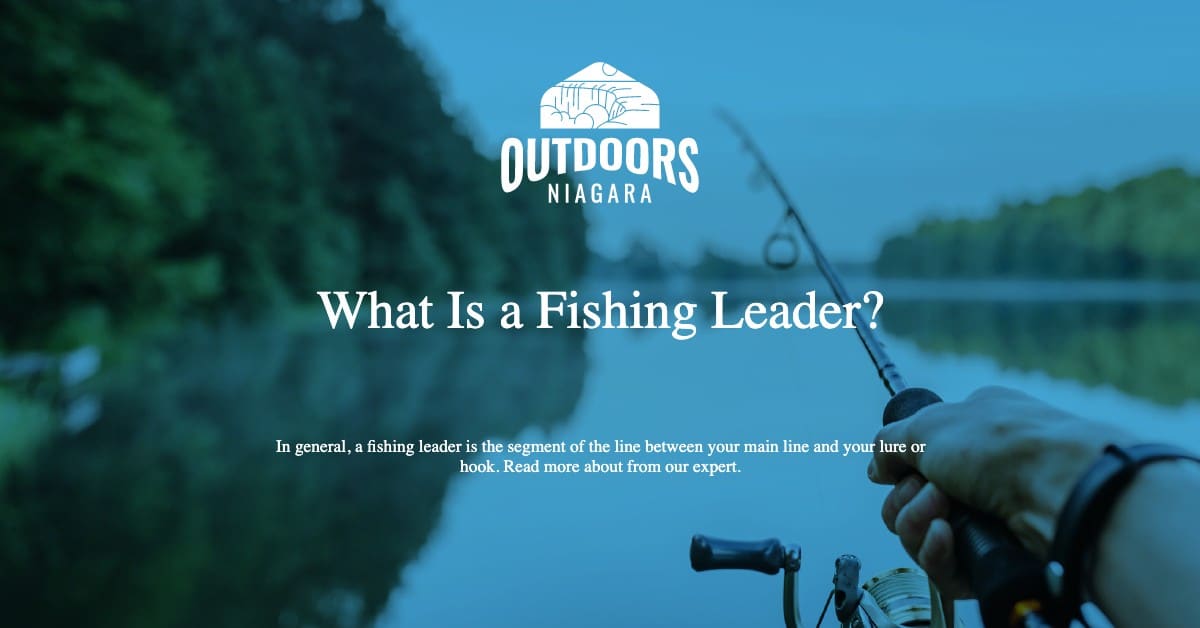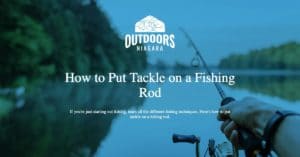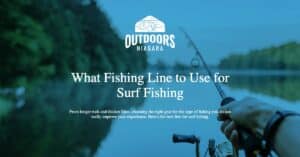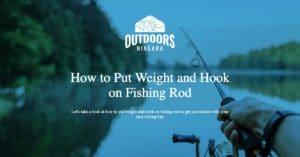A fishing leader is at its most simplistic, the end of your fishing line where you attach the rigging.
In general, a fishing leader is the segment of the line between your main line and your lure or hook.
A fishing leader provides several key functions that make fishing easier and more successful.
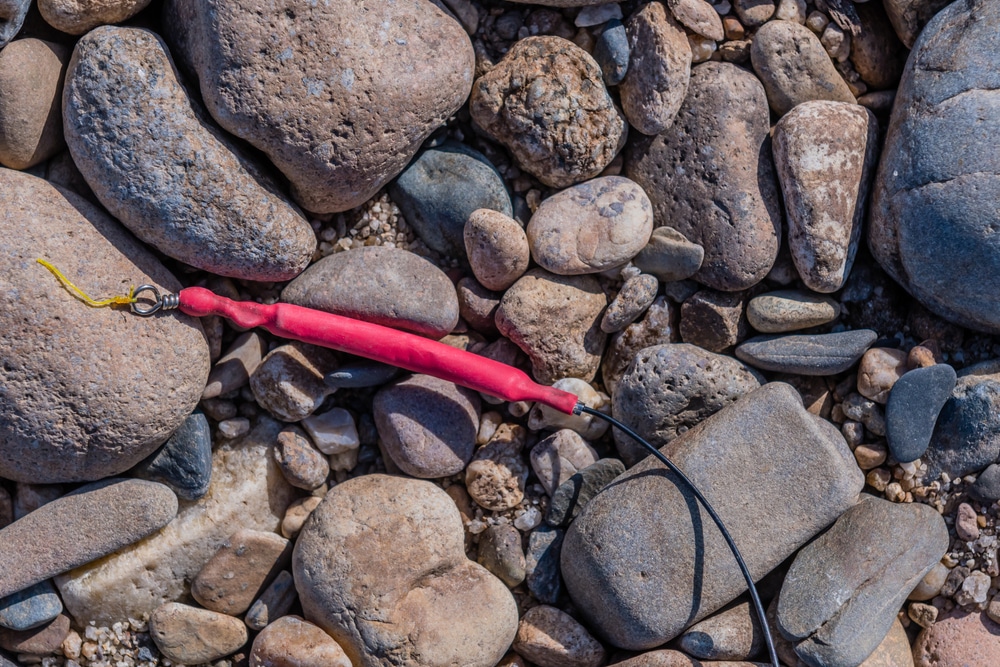
Contents
Are fishing leaders necessary?
Fishing leaders are not always necessary, but they provide so many beneficial tasks that fishing without a leader, while doable, is not advised.
What is the purpose of a fishing leader?
The primary purpose of a fishing leader is to protect the end of your main line from damage.
It is much easier to replace the leader than it is to remove sections of your main line due to damage.
Also, if your lure becomes snagged on something, and you need to break the line, you will often break the leader rather than the main fishing line.
The leader, in that case, helps keep your main fishing line long and in good repair.
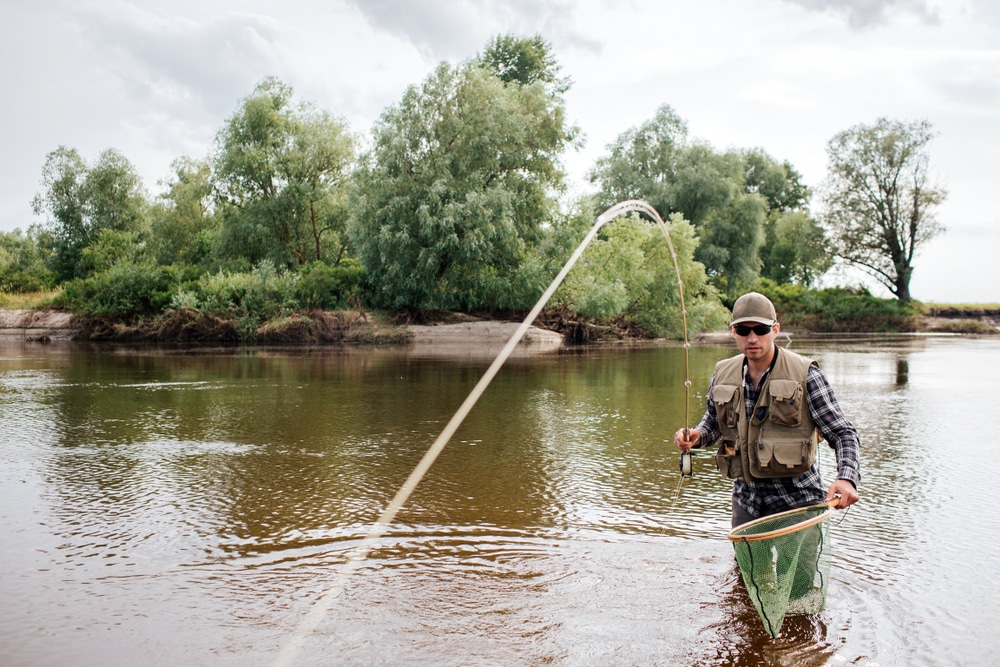
Invisibility
When fishing for bass or other fish that have great vision, you want to present your lure or fly so that it appears to be natural.
If you are fishing with braid as your main line, and many do, it is highly visible in the water and can put fish off your hook.
With mono or fluorocarbon leaders, the lure or fly remains natural looking and the leader line harder to see.
In short, using a leader can help you catch more fish.
Durability
If you have ever felt the inside of a fish’s mouth, you might notice the many pads that have sand-paper like teeth.
If you are fishing with a braided line, it does not hold up well to abrasion, especially from fish teeth.
In a long battle, those pads with all their small teeth can shred braided lines.
That is one reason that we use a leader. Mono or Fluorocarbon leaders will stand up better to all those small teeth.
Also, If you are fishing for fish that have a lot of sharp teeth.
Such as a shark or northern Pike, you will want to set up your pole with a metal leader to counter the biting force of fish that would otherwise make shore work of braid, mono, copolymer, or fluorocarbon lines.
How Long Are Fishing Leaders
Fishing leaders range in lengths from six inches to six or more feet.
Dry-fly fishing often has a long leader to present the fly naturally so that bass, trout, and salmon will strike the fly.
Most leaders are in the two-three foot range.
If you use a shorter leader, it increases the lure, fly, or bait movement which can be beneficial in situations where you need your bait to flutter.
Short leaders are good when you employ power fishing techniques.
A short leader may or may not impact the accuracy of casting, and they make poor choices if you are trolling or using live bait.
They are the go-to choice for fishing in heavy cover.
A medium leader is 24-36 inches long, and it is your standard go-to leader for most types of fishing.
If you are finesse fishing, use a medium leader.
This leader is optimal for trolling and bottom fishing. It does okay with live bait.
A long leader is over 36″ long, and it is best used for trolling, with live bait, and finesse fishing.
It is not a great choice for power fishing or anytime you are fishing in heavy cover.
How Do You Make a Fishing Leader?
The first step is to decide how long your leader needs to be.
Before you but the line, connect the leader to your main fishing line using the Albright Knot, which is ideal under most circumstances and an excellent choice when you are connecting two lines that are different – braided line to mono, mono to fluorocarbon, etc.
Once the two lines are attached, you can cut off a section of leader from the spool.
Add 6-8 inches of extra line to use for the knot that you use to tie on your swivel or lure.
How Do You Tie a Leader on A Fishing Line?
You can connect your main fishing line to your leader by using the Albright Knot.
There are other knots that you can use but the Albright know is best for all fishing situations.
It is the go-to knot when you need to tie two different types of fishing lines together.
Because braided line is so popular, you often have to attach a thinner mono or fluorocarbon leader to braided line.
Some knots will allow the thinner and smoother mono or fluorocarbon lines to slip through the braided line and allowing your leader to come free.
Under stress when fighting a fish, that means your leader, lure, and fish are gone.
What Is the Difference Between Fishing Line and Leader?
A regular fishing line can be a leader. However, in some situations, you may need specialized leaders such as weight-forward (WF) or tapered leaders. A tapered leader is thinnest at the lurer connection and thicker at the knot that connects the leader to your fishing line.
If you are fishing aggressive fish, you may also need a metal leader rather than one made out of a fishing line.
A braided line is not a good choice for leader material. It abrades quickly and can be overly expensive for that use.
Can You Use Regular Fishing Line as A Leader?
Many anglers use regular fishing line as a leader.
The general rule of thumb is to use a heavier line for your leader if you expect the line to take more damage, such as abrasion.
Go 5-6 pound test over what your main fishing line is rated.
For example, if you are using a ten-pound test line as your main line, go with a 15-16 pound test line for your leader.
If you expect that conditions may be light and less damage to your line is expected, then go with a leader that is 4-5 pounds smaller than the pound test of your main line.
For example, if your main fishing line is ten-pound test, then use a 5-6 pound test leader. This works when fishing smaller fish and when fish are very sensitive to line in the water.
Can I Use Braid as A Leader?
You can use braided line as a leader but under most fishing conditions the braided leader will degrade quickly putting your lure and any fish you hook at risk.
It is a much better idea to use mono or fluorocarbon line as leader material.
Can You Use Mono Line as Leader?
Yes. Mono is a good choice for leader material as it handles abrasion much better than most other options.
The only time when mono is not the best choice is when the leader needs to be more invisible in the water.
In that situation, a fluorocarbon line is a good choice.
You can also use a fluorocarbon line as a leader in most situations.
Should leaders be stronger than Main Line?
If you expect there to be more potential for the leader to be banged around or for abrasion you would go with a leader that is 5-6 pounds heavier than your main fishing line.
For example, if your main fishing line is 6 pound test, you would go with a leader that is 12 pound test.
What Is a Shock Leader in Sea Fishing?
A shock leader is a heavier leader that you tie onto your main fishing line when you are fishing in the surf, which is sometimes, referred to as surf fishing or shore fishing.
Surf fishing is often very active and your bait, lure, or fly may be tossed around enough that your line becomes damaged.
The shock leader also helps to absorb the impact that occurs when casting heavier rigging, which can snap your main line.
What Is a Wire Leader in Fishing?
A wire leader, usually stainless steel, is a leader made out of wire.
It is used for targeting big fish, such as marlin, and sharks, and sometimes in trolling.
It is also used in freshwater when you target bigger fish with lots of teeth.
Those can include Northern Pike and catfish.

